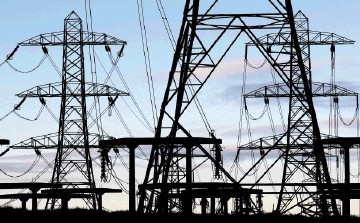
The Government is being accused of complacency over energy supplies amid a warning of “widespread blackouts” as power stations close.
National Grid will publish its winter outlook today, and is expected to deny there is any threat to power in the coming months.
But the GMB union, which represents thousands of energy workers, warned of the impact of nine power station closures due by the end of 2016.
No new coal stations will be built because of environmental standards, new nuclear sites such as one planned in Hinkley, Somerset, will not start generating power for years, and the Government is “failing” to build gas-powered stations, said the union.
Brian Strutton, the GMB’s national officer for energy, said: “If peak demand were to coincide with a time the wind is not blowing, the UK will have just 63GW of reliable, easily dispatchable power.
“The Government has stated that interconnectors, renewables and demand-side response can deal with any shortfall. However the first two cannot be relied upon at a time of system stress and demand-side is unlikely to cover a major shortfall.
“Breakdown or outages at existing stations could lead to a major shortfall and widespread power blackouts. No Government can rule out breakdown or outages at existing stations.”
Mr Strutton said the Government and National Grid were being too complacent about the risk of widespread power blackouts.
Doug Parr, chief scientist of campaign group Greenpeace, said: “Every winter we’re told our energy infrastructure will struggle to cope with a cold snap, and every winter energy firms are knocking on the Government’s door for more handouts.
“The only way to awake from this Groundhog Day is to recognise that, as we transition to clean energy, the best way to keep the lights on is a major expansion of local and decentralised energy in our towns and cities.
“The government needs to back this, alongside the kind of smart, flexible energy infrastructure that is getting cheaper. George Osborne needs to stop throwing money at an outdated energy system based on large plants swallowing up increasing amount of subsidies, like Hinkley Point, and empower cities and local communities to provide the energy resilience we need.”
An assessment in the summer by National Grid showed that the UK would need more contingency measures than last year to ensure the lights stay on.
The gap between total electricity generating capacity and peak demand would fall to just 1.2% without measures in place such as paying moth-balled power plants to be ready to come online and paying factories to be prepared to power down if needed, it was reported.
With those extra measures in place for times of peak demand, the capacity margin rises to 5.1%, the National Grid assessment showed.
Last year’s capacity margin was 4.1% without additional provisions, which raised the breathing space to 6.1%.
But mild windy weather, high levels of electricity imports from the continent and greater than expected levels of available power plants meant the capacity margin was “adequate”, and extra help to meet demand was not needed, the report said.
It adds that this winter the margins will be tighter, due to the closure of power stations, requiring more measures to be bought to balance the system and ensure the lights stay on – at a cost of just 50p on the average consumer bill.
Recommended for you
